Analytics is the backbone of any successful online business.
It reveals critical insights into who visits your website, what they are doing, and how they got there.
To make data-driven decisions, you need to understand these analytics thoroughly.
And, we are not overstating here.
Understanding user behavior can help you optimize your website to meet the needs of your visitors, tailor your marketing efforts, and target the right audience to grow your business.
So whether you are looking to identify the most popular pages or uncover the traffic sources, web analytics has your back.
Now, when we talk about website traffic analytics, Google Analytics is probably the one tool that comes to mind.
Loaded with advanced tracking capabilities and a comprehensive view of user interaction, this platform is one of the most popular choices among business owners to view Google analytics website visits.
So, in this article, we will dig deeper into this tool and will find out how to get the most out of Google Analytics website traffic insights.
Google Analytics 4
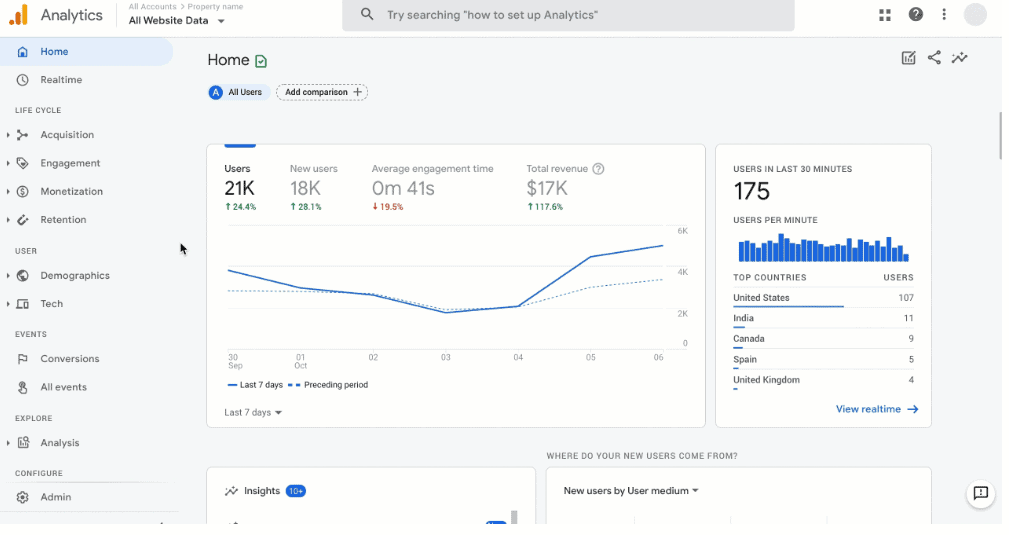
Google Analytics, or GA4, is the latest version of Google Web Analytics. It helps you get deep insight and a comprehensive view of user interaction across your website and mobile applications.
GA4 introduces a new data model that shifts from session-based to event-based tracking thus giving you more granular and flexible data collection.
How to check Google Analytics website traffic in GA4?
If you are confused about how to check traffic in Google Analytics, here is a step-by-step guide.
- Start by navigating to Acquisition>Traffic acquisition
- On this page, you can view channels that drive traffic to your website.
Let’s dig beyond Google Analytics website traffic and learn how to find more information about organic traffic in Google Analytics.
In the traffic acquisition report, locate the “session default channel group”.
Use the drop-down menu and select “session source/medium”.
This section will give you all the details required about the source contributing to each traffic channel.
Google Analytics website traffic sources for a specific page
If you want to analyze Google website traffic sources, you can follow these steps:
- Navigate Engagement> Pages & Screens
In this table, you can check the views each page received and even how many users completed those views. - To add source and medium to the report, click on the plus icon above. Then choose the traffic source and then the session source/medium.
You can further modify the table and view your landing pages by source/medium.
- Scroll over to the “event count” column. Click the down arrow next to all events and select the “first visit”.
- Now click the “event count” column to sort by landing page visit events.
Now that we know how to check traffic in Google Analytics, let’s discuss some key metrics and what they mean.
Key metrics in Google Analytics traffic report
To understand the Google Analytics traffic report fully, you must understand these metrics first.
Here are some metrics and the meanings for each metric.
| Metrics | Meaning |
|---|---|
| Average engagement time per session | The average time a user spent on your browser or app or the time it was running in the background of the user’s device. |
| Key events | It demonstrates the number of times the users triggered a specific event. |
| Engaged sessions | It lists the number of sessions that last more than 10 seconds longer or had more than one key event or two-page view. |
| Engaged sessions per user | It explains the average number of engaged sessions by user. |
| Engagement rate | It explains the percentage of sessions that were engaged. |
| Event count | It is the number of times users trigger an event. |
| Events per session | It explains the average number of events per session. |
| Engaged sessions per user | It explains the average number of engaged sessions by user. |
| Sessions | It is the number of sessions on the said website or app. |
| Total revenue | It explains the total revenue from purchases, subscriptions, and ad revenue. |
| Users | The number of individual users visiting your website or mobile application. |
Benefits of Google Analytics 4
Google Analytics website traffic has multiple benefits.
- Free tool
One of the most important benefits of GA4 is that it is free to use and is accessible to businesses of all sizes.
- Simple to set up
It is also easy to set up and comes with clear instructions & minimal technical complexity. It means you can get started quickly and track your website traffic soon.
- Track web traffic
Google Analytics goes beyond basic traffic monitoring. You can track specific user actions based on different events and view organic traffic in Google Analytics. This gives you a deeper understanding of how users navigate your website.
- Analyze user behavior
Google Analytics can also help you analyze user behavior. You can track events and user behavior across your website to understand how users are interacting with your content.
- Measure various metrics
Google Analytics offers a wide range of data metrics that help you to track your website.
- Measures campaign performance
You can integrate GA4 with Google ads to track the campaign performance directly in Google Analytics. It helps you see how well your campaigns perform and how they contribute to your traffic and conversion.
Why consider an alternative to Google Analytics 4?
Google Analytics is a powerful tool with packed features. It lets you monitor Google Analytics website traffic.
But if you run an eCommerce business, you should go beyond it and look for better and specialized tools like Putler.
What makes Putler a better alternative?
Putler is a comprehensive analytics platform, designed for eCommerce and SaaS businesses to help them optimize operations and increase sales.
Putler simplifies data handling by consolidating data from multiple sources in a unified dashboard. It helps you keep an eye on different aspects of your business.
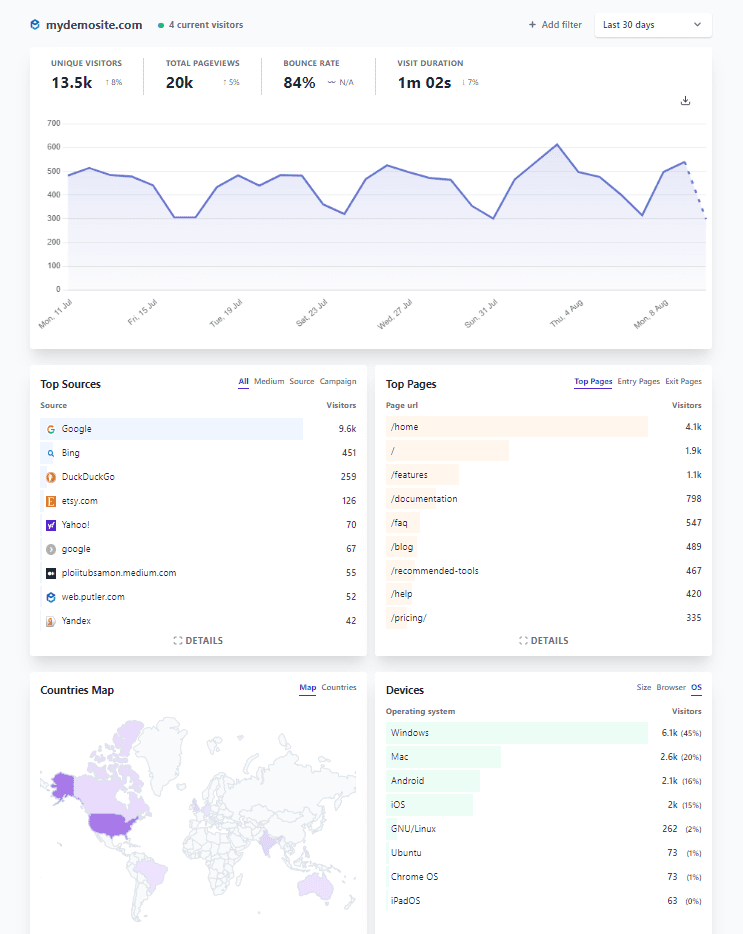
Putler has a separate dashboard dedicated to web analytics.
It provides a centralized view of all key metrics without overwhelming you, saving you time from visiting multiple pages to check the important analytics.
It lets you see all the necessary data like top-performing pages, demographics, traffic sources, etc. in a comprehensive dashboard.
- Simple analytics tool
Putler is a simple analytics tool that helps to get the relevant data about your website performance. It assists in optimizing websites for better user engagement and business growth.
- Flexible
Another key highlight of Putler is its flexibility. It allows you to adjust the parameters as per your business needs, such as countries, pages, goals, etc.
Overall, it helps in building insightful reports to make informed decisions.
- Privacy-focused
And not to mention, Putler’s commitment to privacy.
While, Google Analytics does share your data with advertisers, business partners, sponsors, and other third parties, Putler makes you the owner of your data.
Yes, it doesn’t use cookies or track any of your data. Overall, you can rely on Putler for reliable analytics without compromising your privacy and data protection.
- Real-time data sync
Putler offers real-time data reporting which is different in GA as it may need some time for data processing and reporting.
This helps eCommerce businesses to access minute-by-minute information about sales, conversion, and customer behavior.
Overall, it contributes to faster decision-making and better response.
Businesses that would benefit using Putler + Google Analytics
Putler offers some unique features over Google Analytics. Here are some business owners that can use these features:
eCommerce businesses:
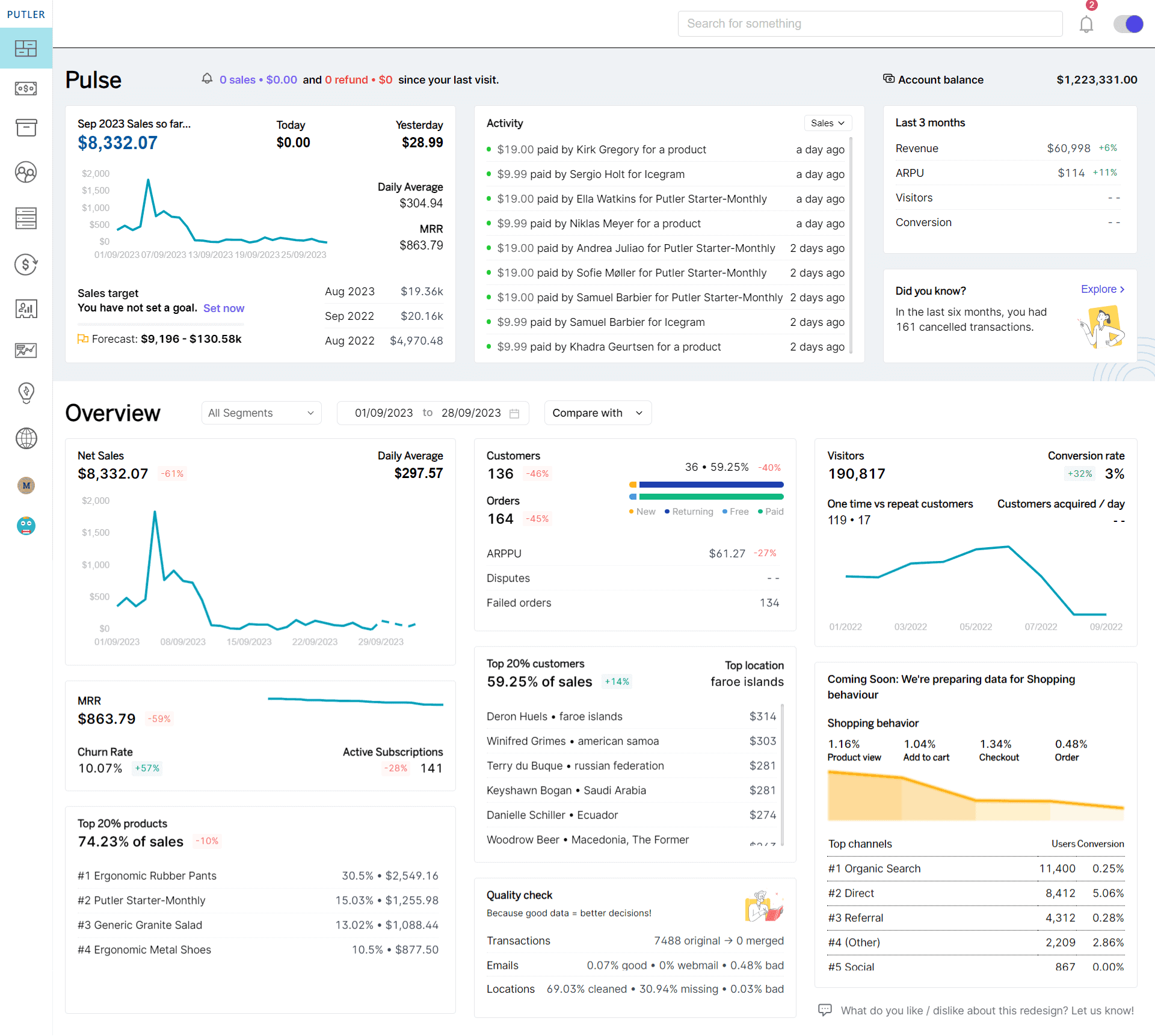
Putler provides detailed and actionable insights for eCommerce and SaaS businesses. It offers a dedicated dashboard for sales, products, customers, audience, etc.
Additionally, it is loaded with features like sales forecasting, RFM segmentation, advanced filters, detailed transaction history, etc.
This makes Putler an ideal tool for eCommerce businesses, helping them optimize their operations and marketing strategies more effectively than GA4.
Small-to-Medium Enterprises (SMEs):
Small-to-medium enterprises can also find Putler useful. With Putler’s user-friendly dashboard and easy-to-understand metrics, one can simplify complex data analysis, and make it accessible to users without deep technical expertise.
GA4, while powerful, can be overwhelming for smaller businesses due to its complexity and the steep learning curve.
Subscription-based models:
SaaS businesses can also benefit from Putler’s specialized features such as churn rate analysis, recurring revenue tracking, and customer segmentation.
These functionalities are essential for understanding subscribers’ behavior and improving retention levels.
Businesses requiring multi-channel integration:
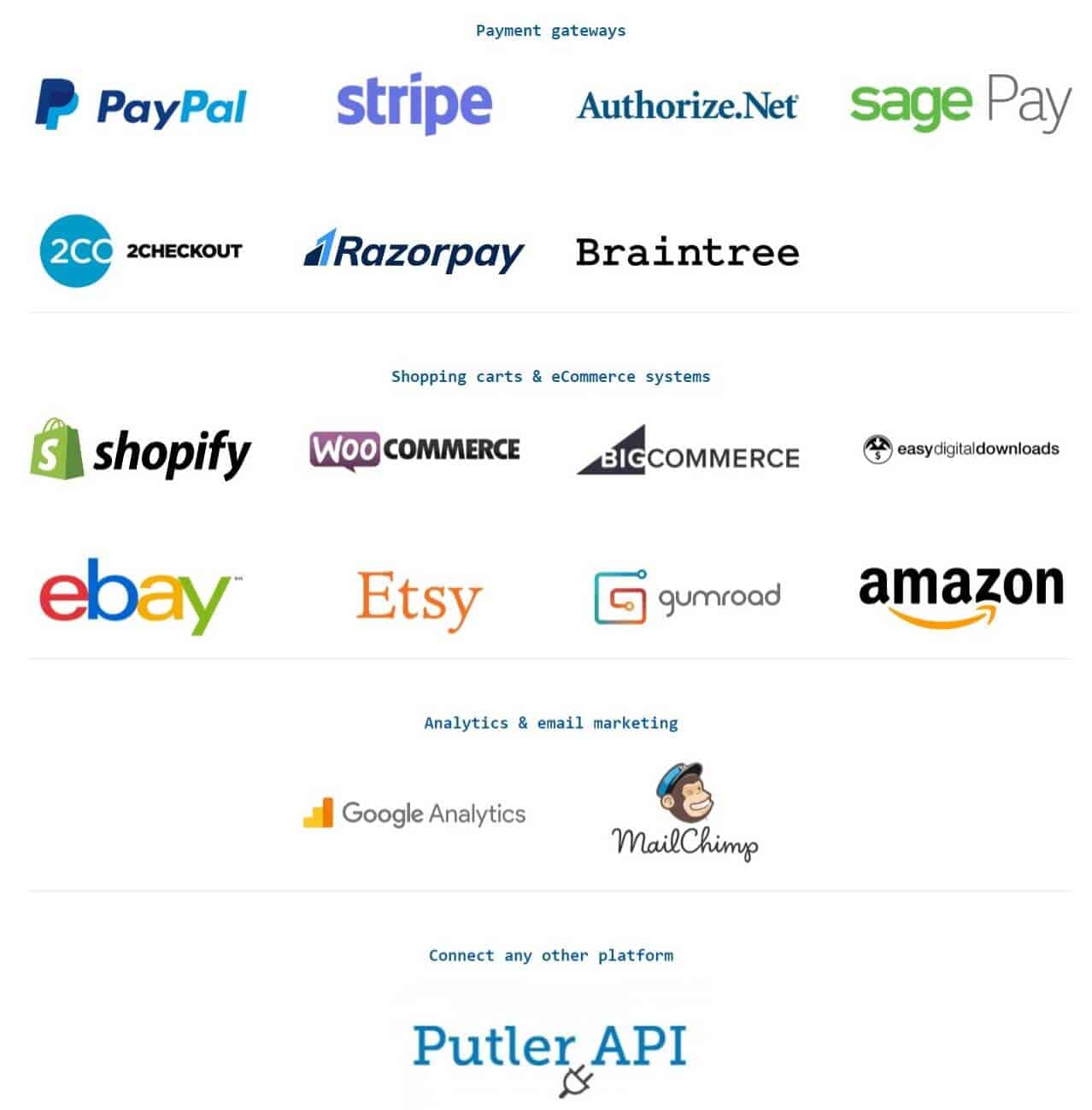
Putler can integrate with more than 17+ different channels, including eCommerce websites, shopping carts, payment gateways, and more.
This helps businesses consolidate their data from various sources and view it into one unified platform. This helps them analyze performance across the different channels and minimize errors of importing data manually.
Businesses requiring advanced segmentation and filtering:
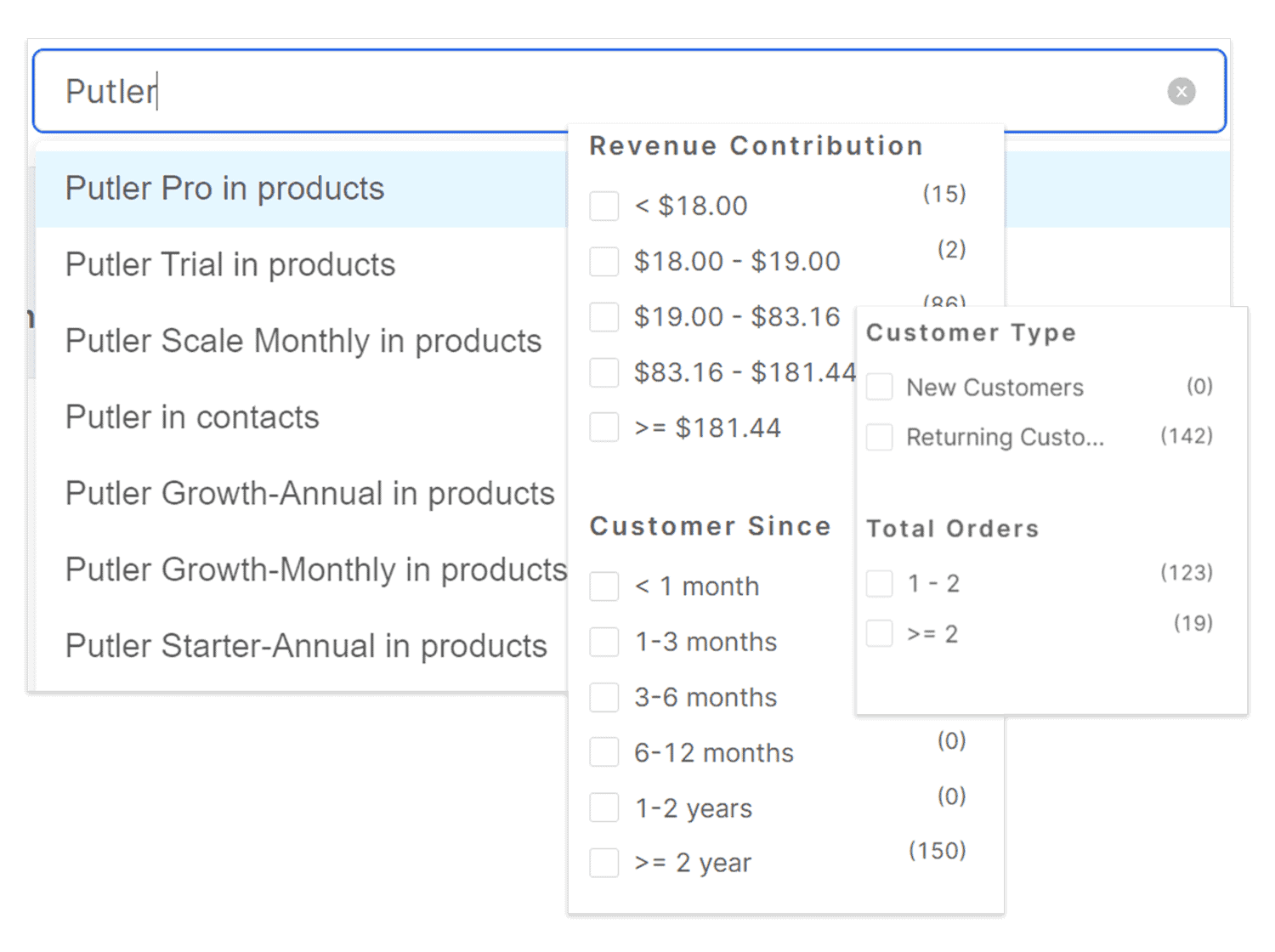
Putler also offers several advanced segmentation and filtering options.
It lets you filter out your data based on different criteria like customer demographics, purchase behavior, product categories, and more.
It provides a granular level of visibility into different sections of your business.
You can even segment your customers to personalize your marketing efforts and increase their effectiveness.
Businesses requiring predictive analytics:
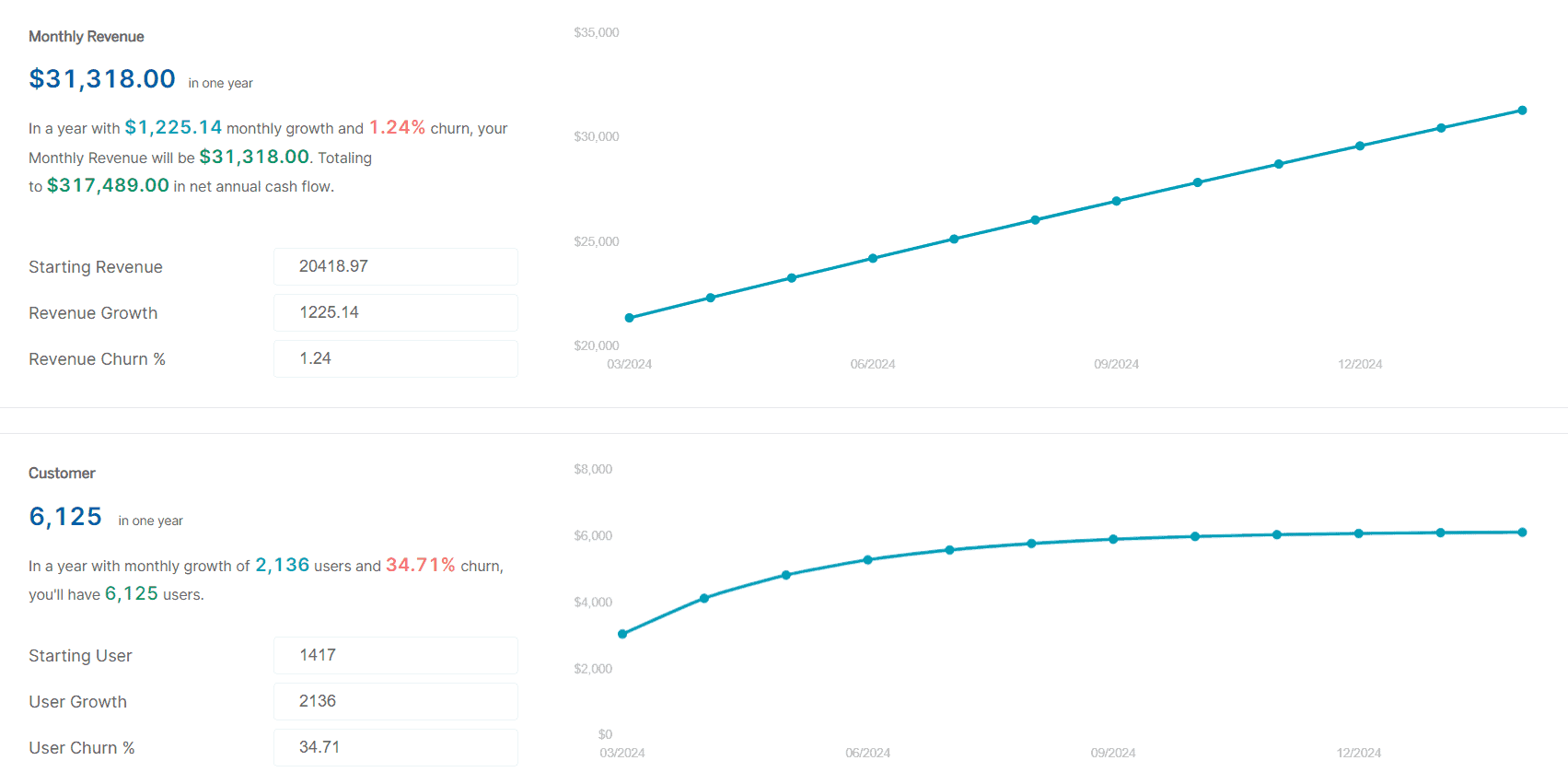
Putler uses advanced analytics abilities to provide predictive insights.
This includes sale forecasting, identifying high-value customers, recommending products based on the purchasing behavior of customers, etc. y
Who doesn’t need Putler?
Now that we have talked about who needs Putler over Google Analytics, let’s talk about who will find Google Analytics more useful than Putler:
- Bloggers
- Non-eCommerce businesses
- Large enterprises with complex data needs
- Businesses heavily invested in the Google Ecosystem
- Businesses that have cost considerations
How to connect Google Analytics to Putler?
In the above section, we listed some key benefits of Putler over Google Analytics. But we can still not deny the importance of Google Analytics.
So let’s see how you can reap the benefits of both worlds.
You can easily integrate your Google Analytics with Putler to get a holistic view of your business (both web analytics and eCommerce analytics).
All you need is to follow these simple steps:
- Once you sign in to Putler, click on the Google Analytics icon
- It will open up a window and ask you to sign in to your Google Analytics account
- Once signed in, it will ask you to ‘Allow’. Putler access to your analytics data
- Select the views you want to connect within Putler
- Hit save.
Your Google Analytics data source is now connected to Putler.
Benefits of connecting Google Analytics to Putler
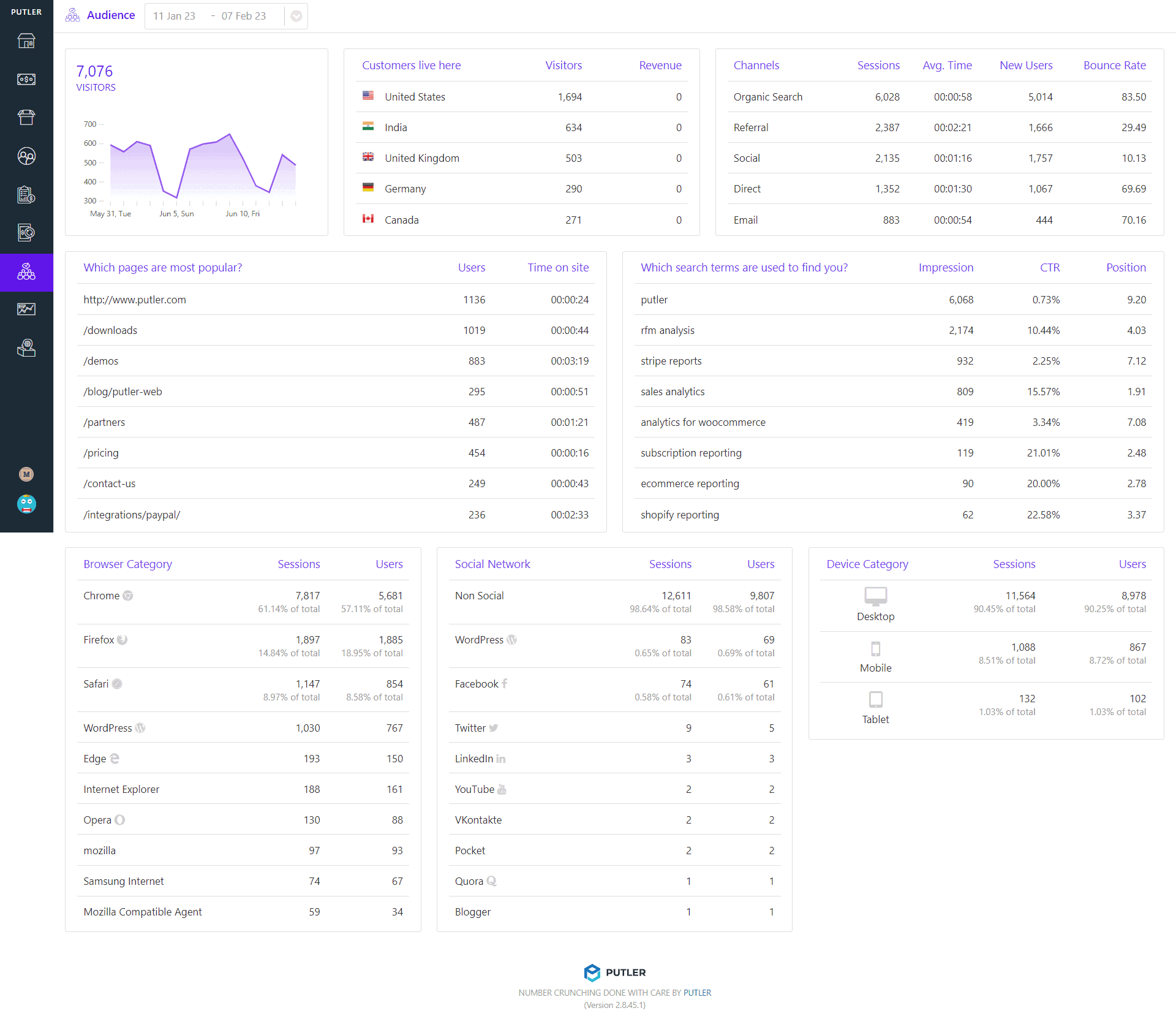
Connecting your Google Analytics with Putler helps you combine the strengths of both platforms.
This gives you a more comprehensive view of your business and helps make better decisions.
- Putler’s Audience Dashboard pulls data from Google Analytics and Google Search Console and provides a comprehensive view of all important web metrics.
- Businesses with multiple Google Analytics accounts can use Putler to get a unified view of them all. (And since Putler can also integrate with payment gateways and eCommerce platforms, you can relate visitor data with the revenue data to get more accurate reports on your business performance.)
- Most importantly, Putler transforms the raw data of Google Analytics and turns them into actionable insights. This helps you react quickly to the ongoing changes in your business. Additionally, these insights are more accessible and easier to understand for those who belong to non-tech backgrounds.
Conclusion
Both Google Analytics and Putler have their strengths and weaknesses.
GA4 provides a comprehensive insight of your Google website traffic. It provides detailed reports on Google Analytics website visits. It also seamlessly integrates with the Google ecosystem.
Putler on the other hand stands out for a specialized focus on eCommerce analytics.
It offers real-time data synchronization, advanced segmentation, and filtering capabilities with predictive analytics.
And not to mention that it can integrate multiple and payment gateways to provide a unified view of your entire business.
But why choose one when you can have both? You can combine the capabilities of Google Analytics and Putler and know what’s best for your business.
Simply integrate your Putler account with the GA4 and you are ready to thrive.
